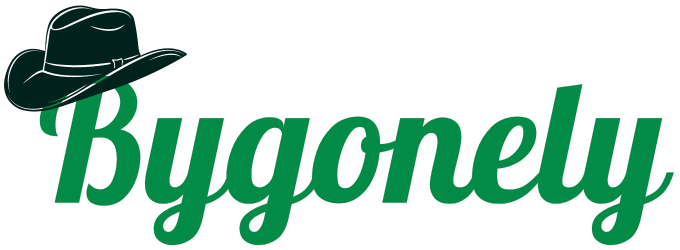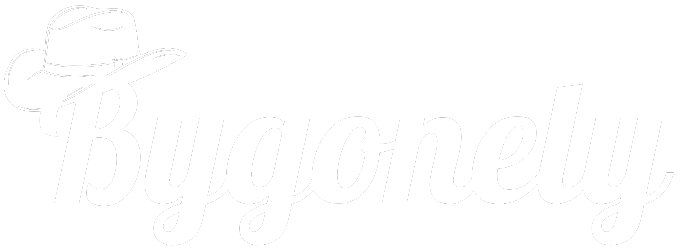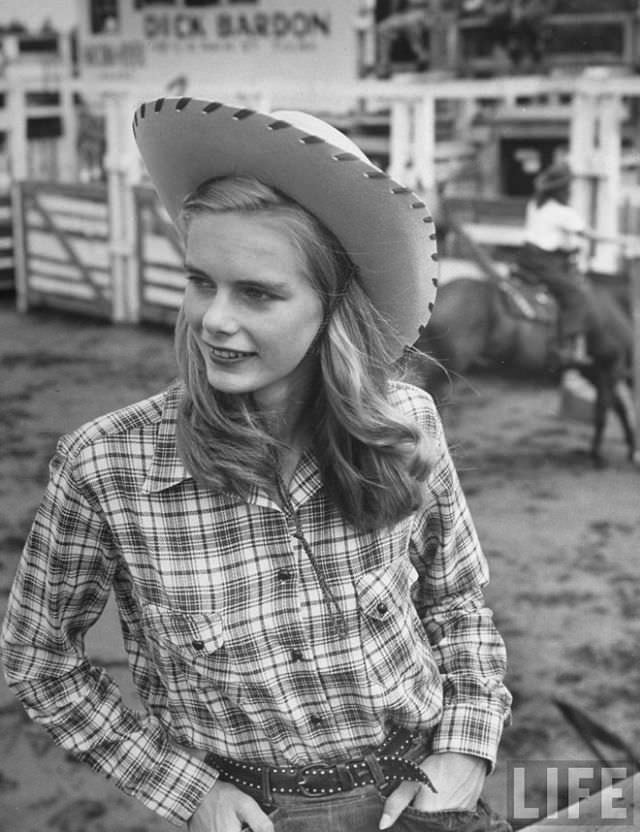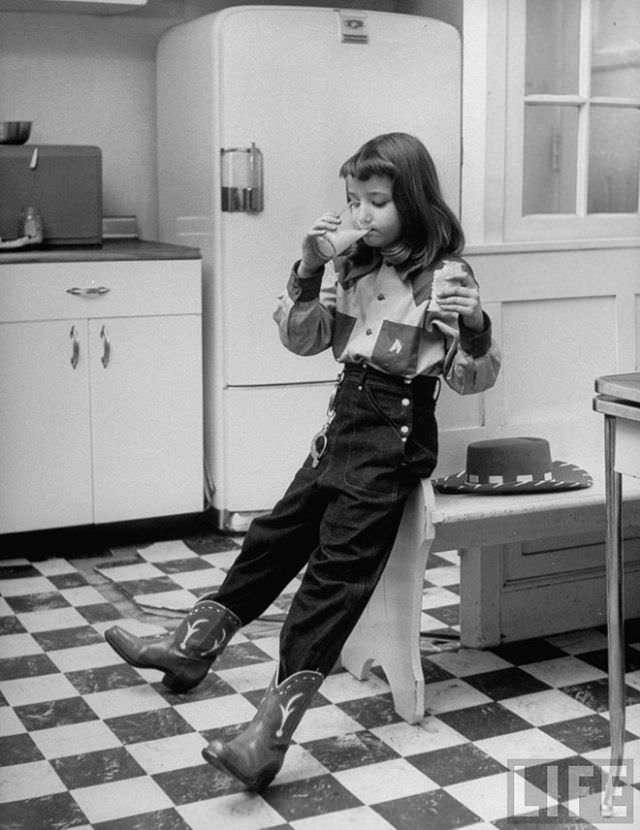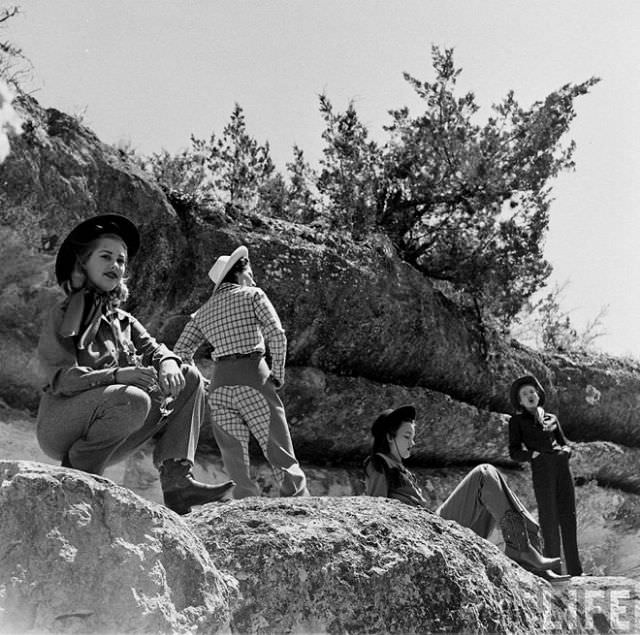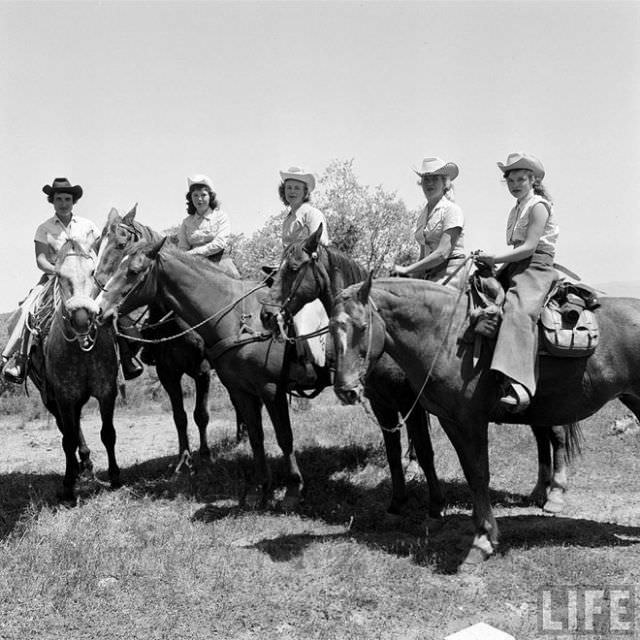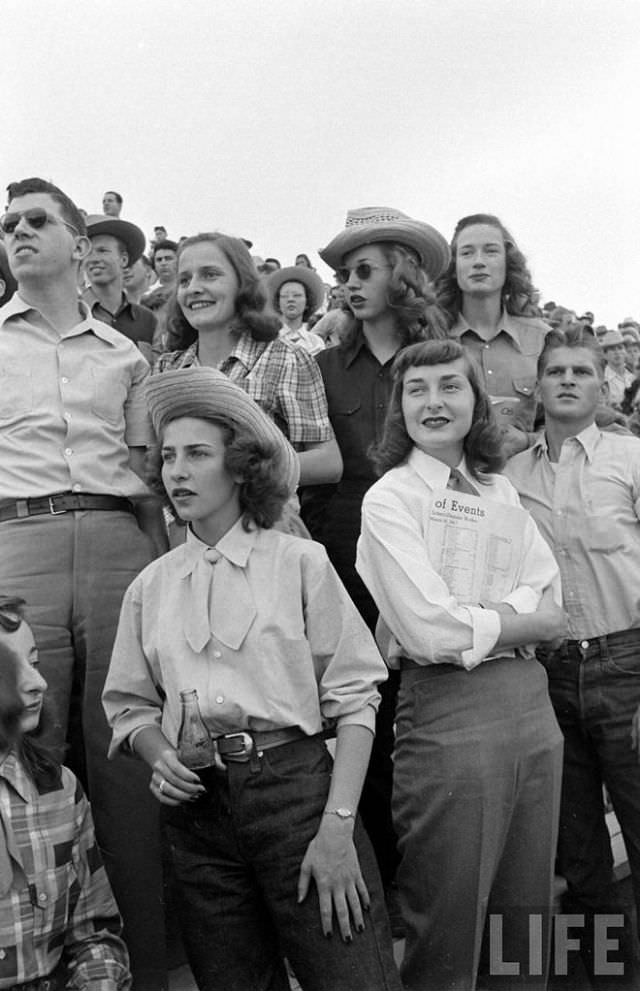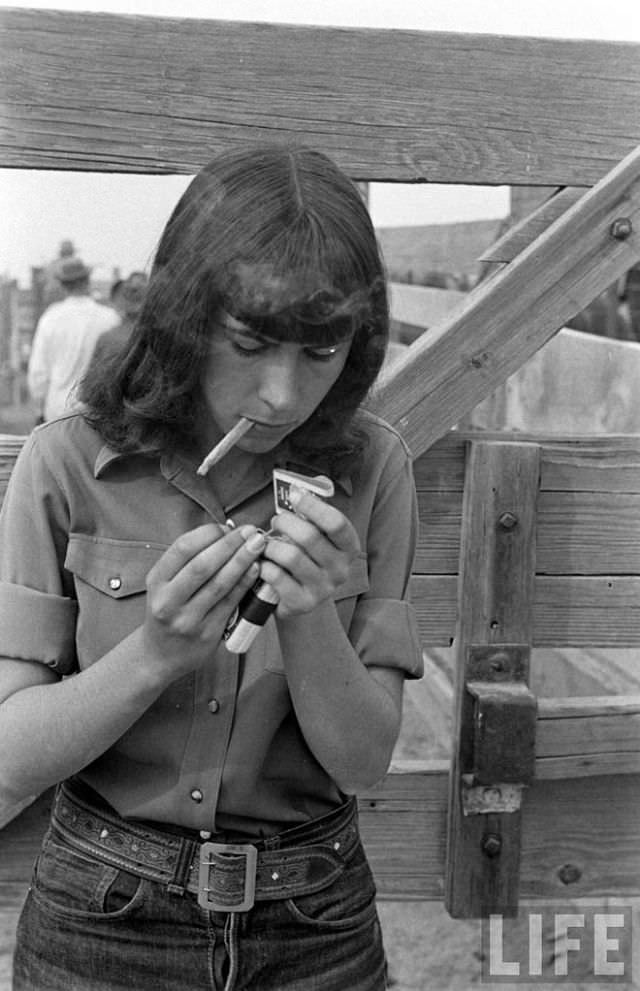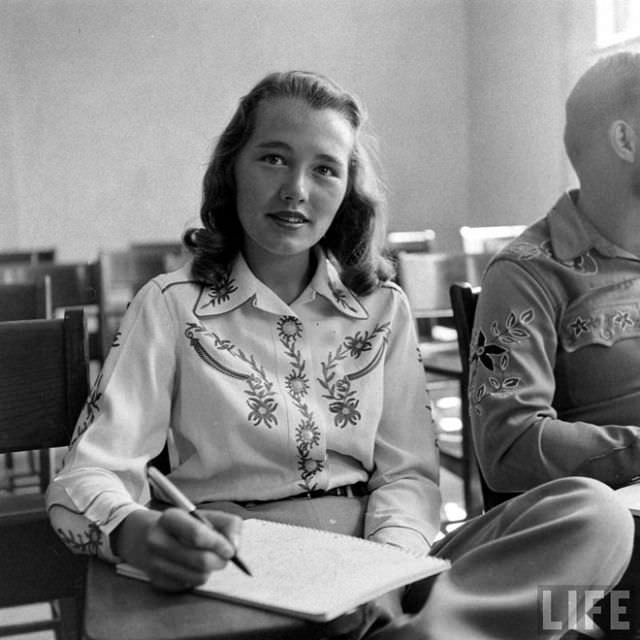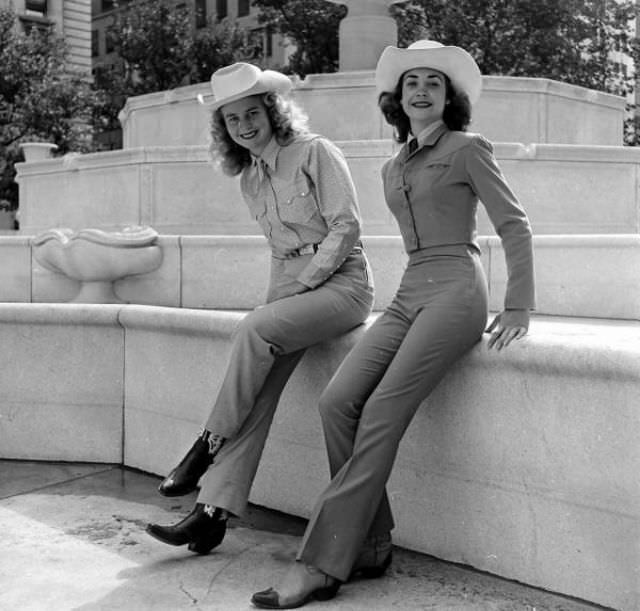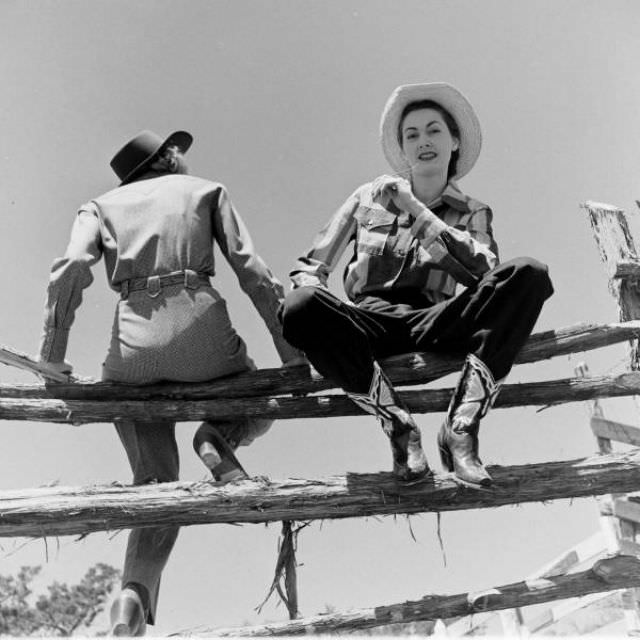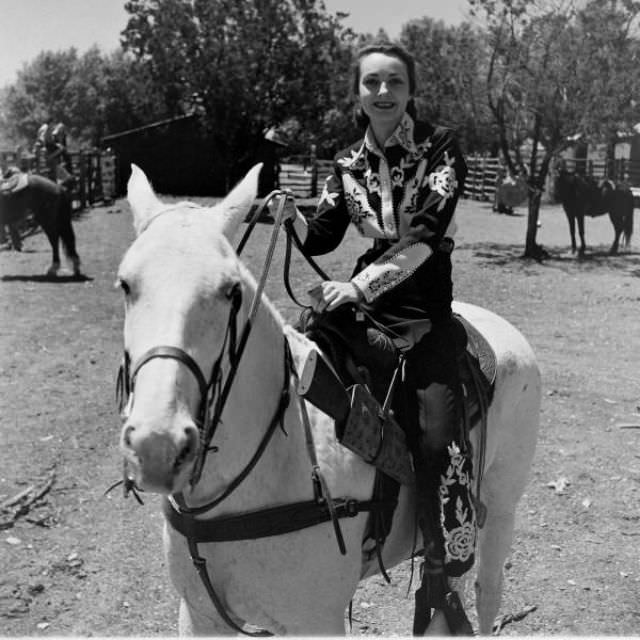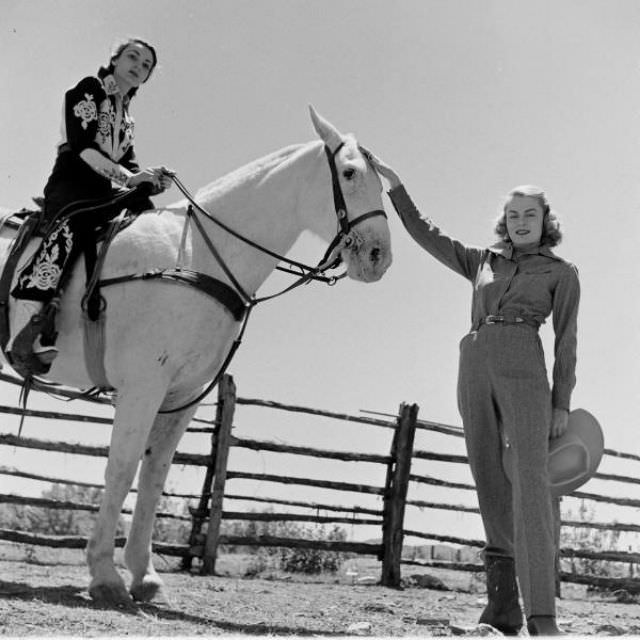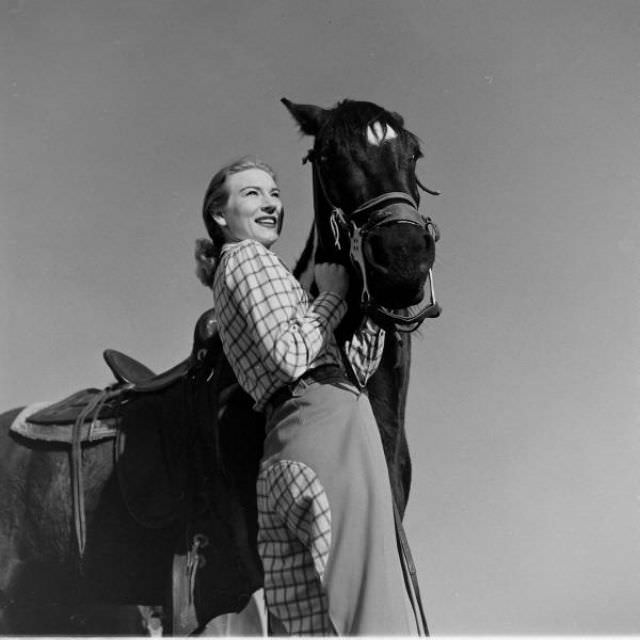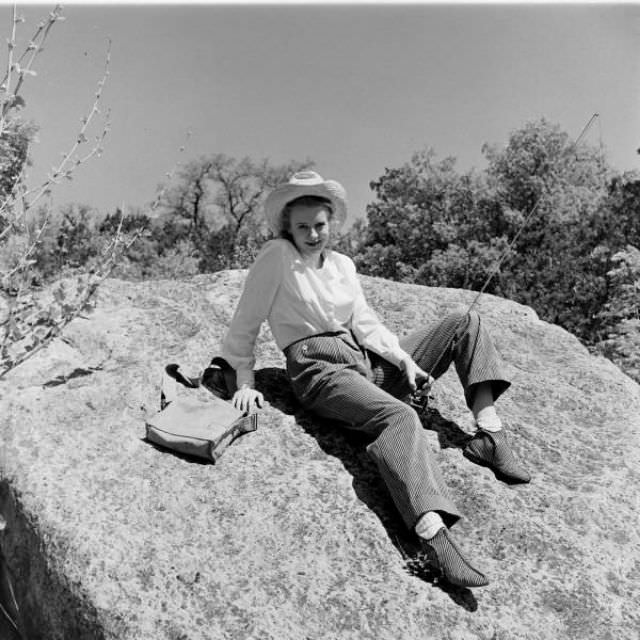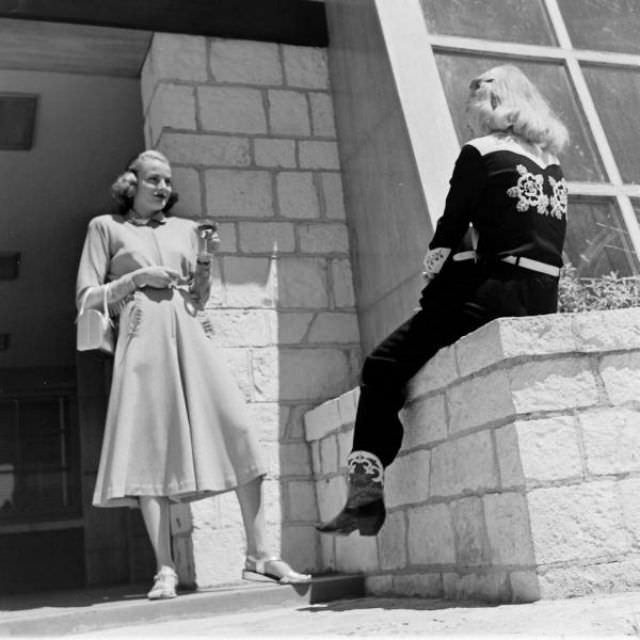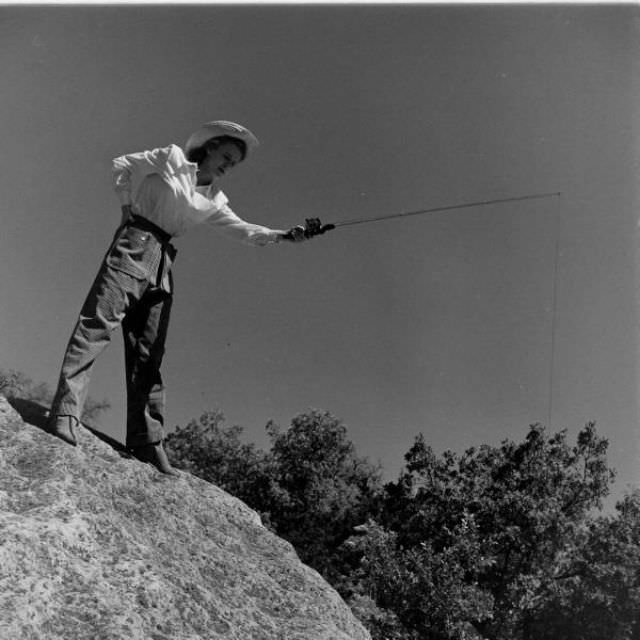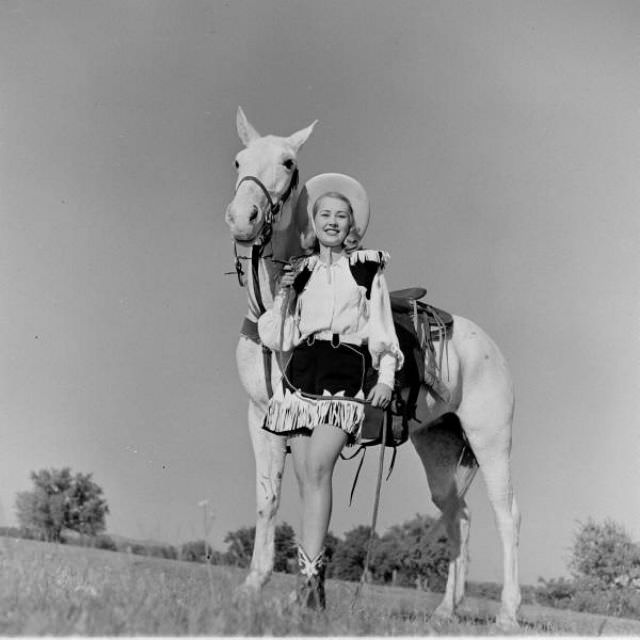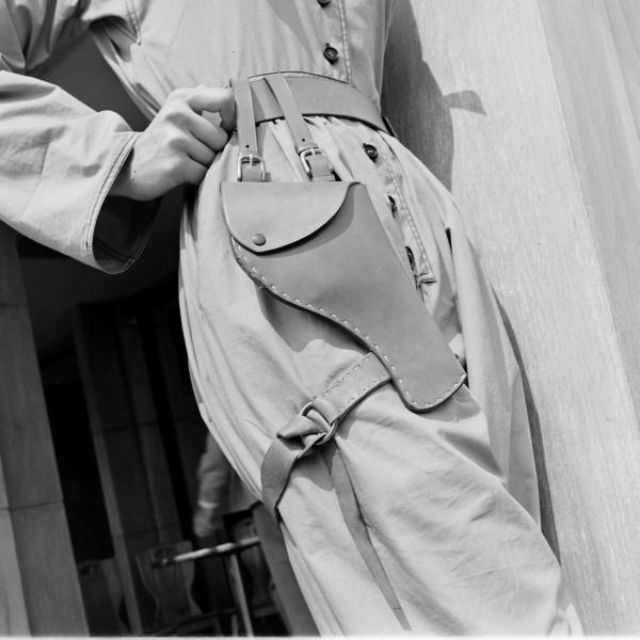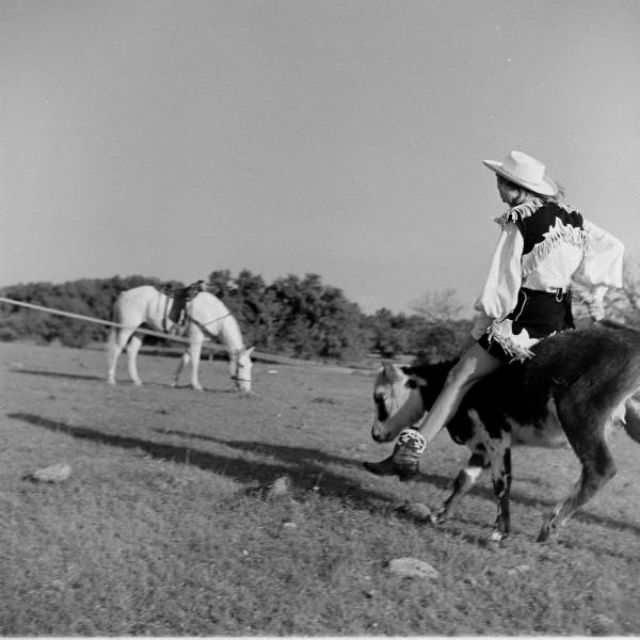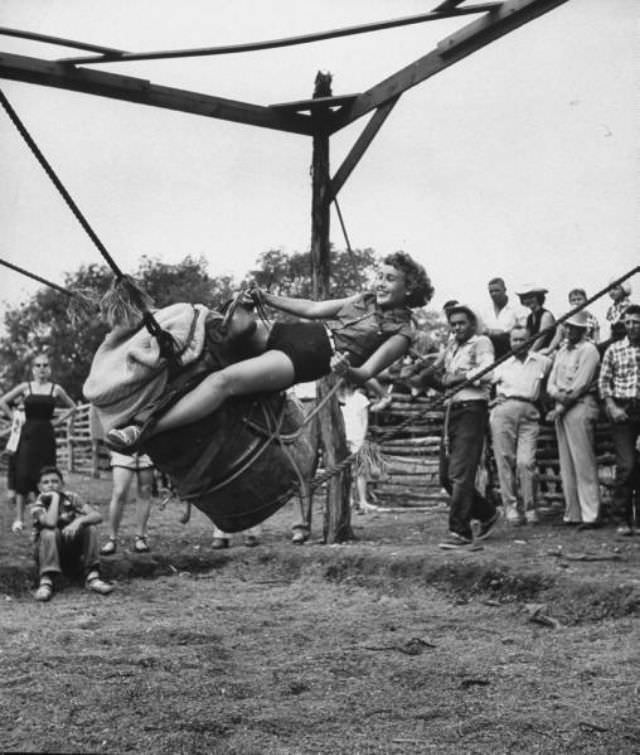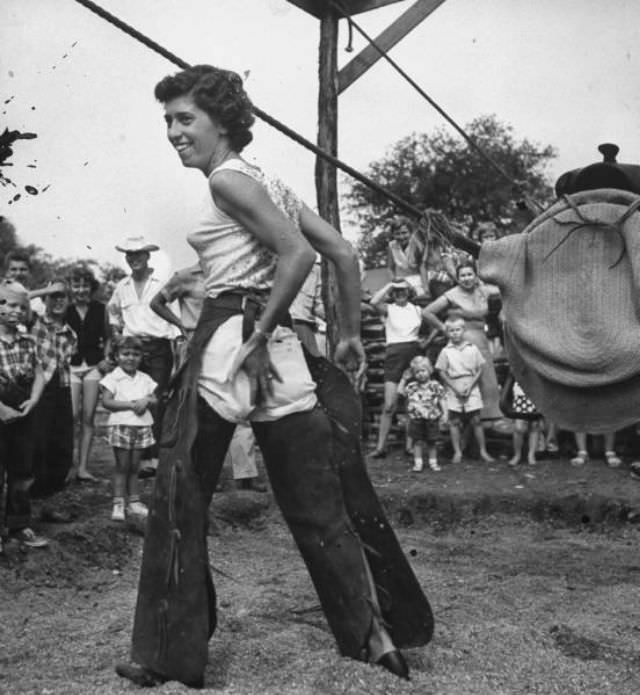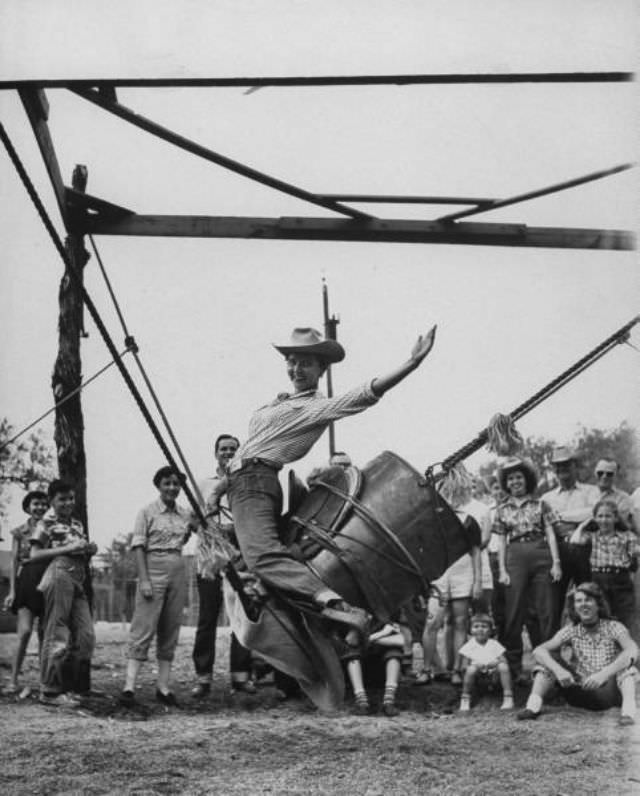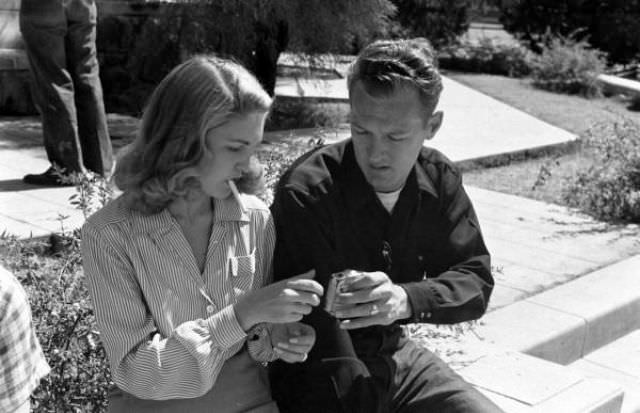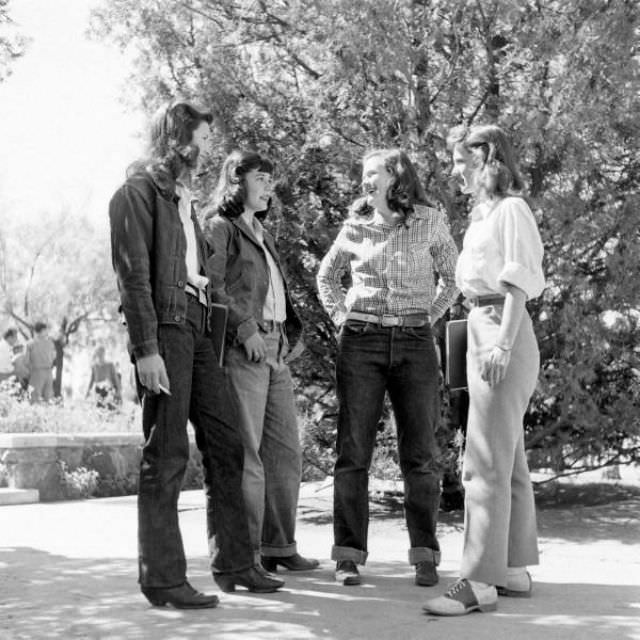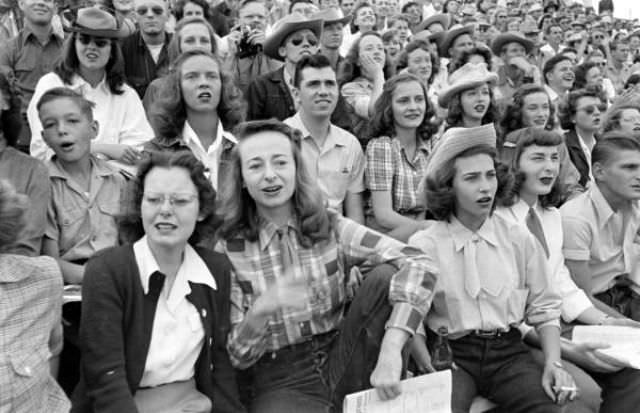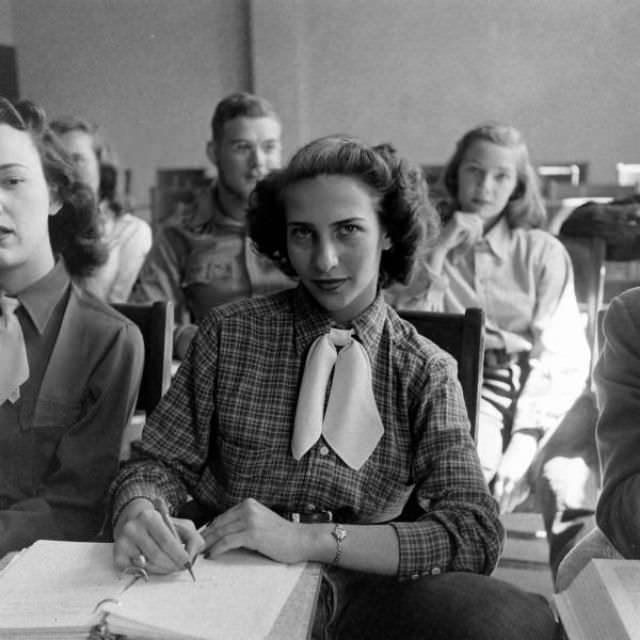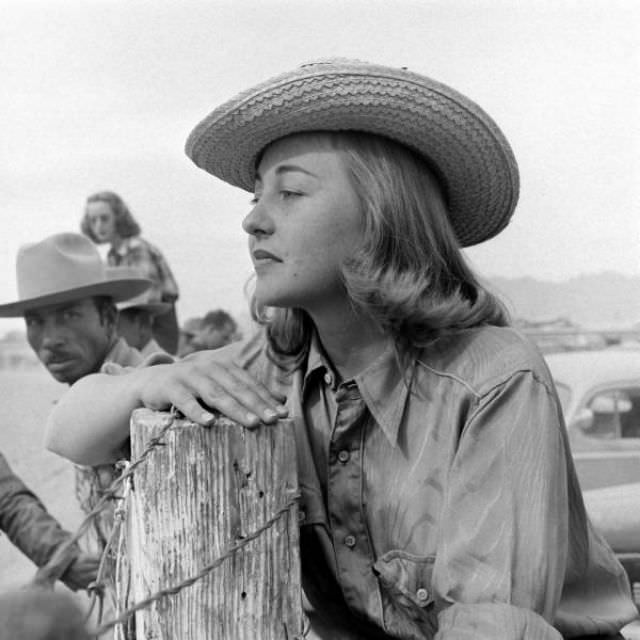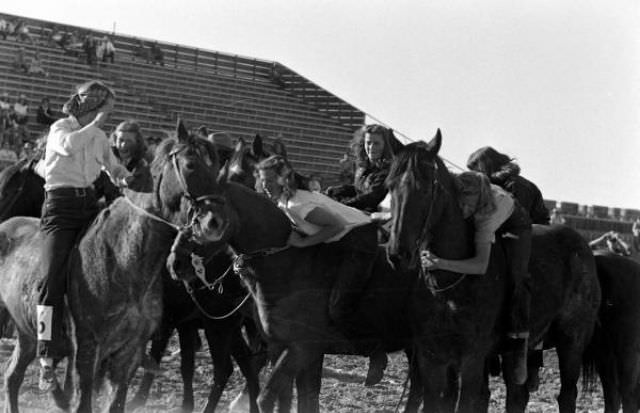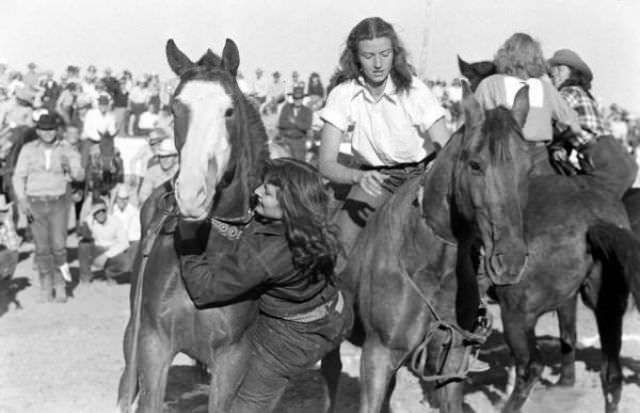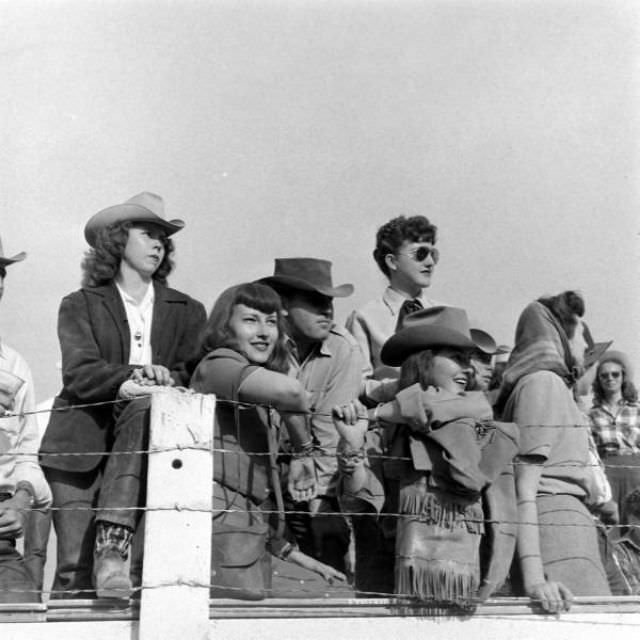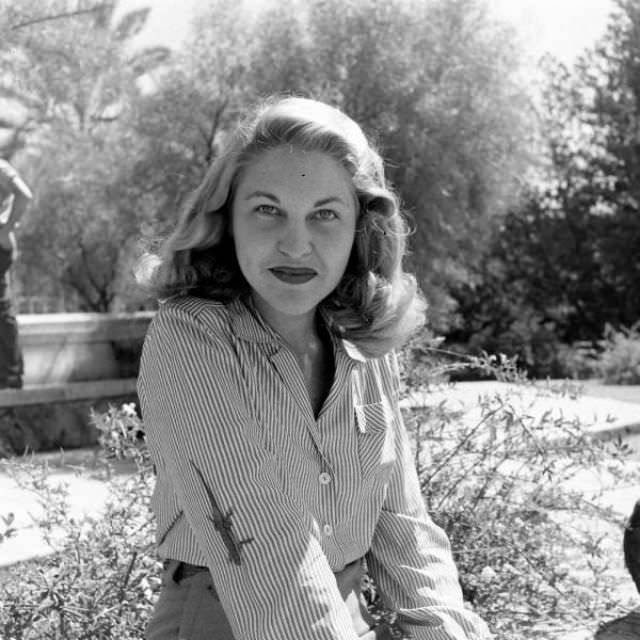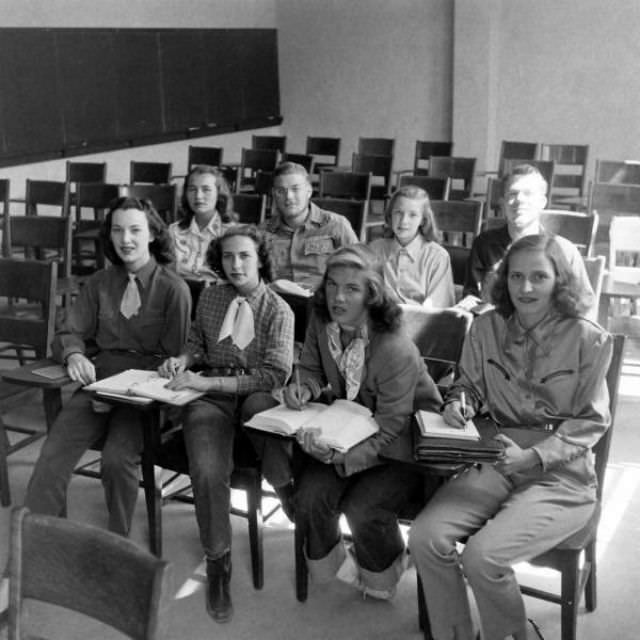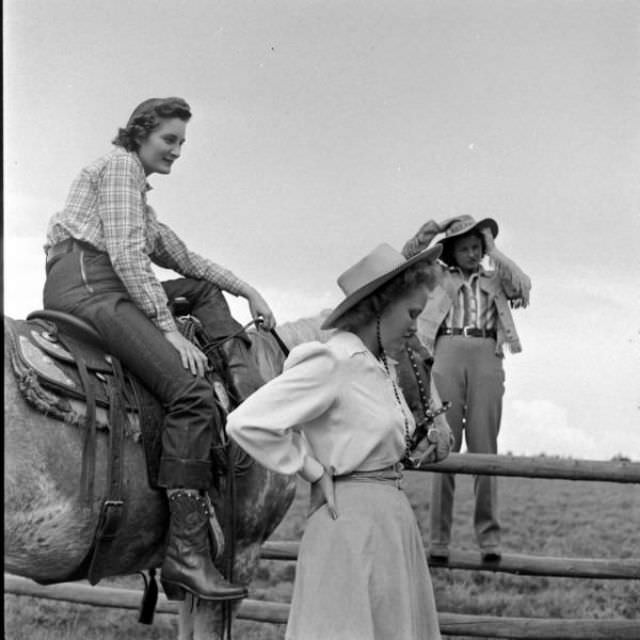In the 1940s, American cowgirls carved out a distinct space for themselves in the West. They were not just decorative figures but skilled riders, ranch hands, and competitive athletes. Their lives were a blend of demanding work and public performance, a reality captured by LIFE magazine photographers between 1947 and 1948 at events like the University of Arizona Rodeo and the opening of the Flying L Ranch in Texas.
Life on the Ranch
The work of a ranch cowgirl was physically demanding and required a deep understanding of livestock and land. Women on ranches performed many of the same tasks as their male counterparts. They rode for miles to check on fences and water sources for cattle herds. A key part of their job was herding cattle, which involved moving large groups of animals across vast pastures, often on horseback.
Cowgirls were proficient in roping, a skill necessary for catching and doctoring sick or injured calves. Their days were long, starting before sunrise and ending after sunset, filled with the constant, practical needs of a working ranch. This work demanded toughness and resilience, as they faced challenging weather conditions and the unpredictable nature of working with large animals.
Read more
The Rodeo Arena
The rodeo was a public stage where cowgirls showcased their equestrian skills. By the late 1940s, events specifically for women were a standard part of many rodeos. One popular competition was barrel racing, which required a rider to guide her horse in a cloverleaf pattern around three barrels at high speed. This event tested both the horse’s agility and the rider’s control.
Another key event was bronc riding. In the 1940s, women’s bronc riding was a significant attraction. Cowgirls would attempt to stay on a bucking horse for a set amount of time, typically eight seconds. They were judged on their form and control during the ride. These athletes trained rigorously to develop the strength and balance needed to compete. At the University of Arizona Rodeo in 1947, female students demonstrated these skills, participating as serious competitors in the collegiate rodeo circuit.
Cowgirl Fashion and Style
Cowgirl attire in the 1940s was a mix of practicality and distinctive Western style. For everyday ranch work, function was key. Cowgirls wore durable denim jeans or canvas pants, which protected their legs while riding. They wore long-sleeved shirts made of cotton to shield them from the sun and dust. A wide-brimmed hat, typically a felt Stetson, was essential for protection from the elements. Leather boots with a high heel were standard, designed to prevent a rider’s foot from slipping through the stirrup.
For rodeos and special events, this practical attire was often embellished with flair. At the 1948 opening of the Flying L Ranch in Bandera, Texas, a fashion event highlighted this specialized style. Cowgirls wore ornate Western shirts featuring elaborate embroidery, pearl snap buttons, and decorative piping. They paired these with tailored trousers or split skirts designed for riding. Accessories like leather belts with silver buckles and colorful bandanas completed the look, creating a distinct and confident image that defined the rodeo cowgirl. Photographers like Nina Leen and Cornell Capa documented these outfits, showing a style that was both functional for riding and visually striking for an audience.
